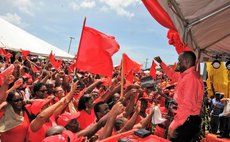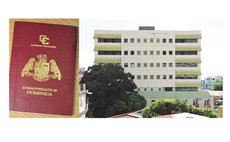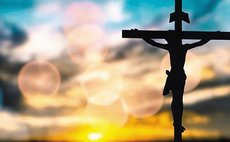Hurricanes 2013: Hope Alone is not Enough
Last week was the official start of the six-month Atlantic hurricane season and already storm activity is heating up in the region. As the Sun goes to press, Tropical Storm Andrea has formed in the Gulf of Mexico, just one week after the storm season began officially, and there have been press reports that June 2013 will be an extremely active month indeed.
As the Sun reported on its back page last issue, Dominicans seem to have adopted a laissez- faire attitude to preparation for hurricanes. Almost everyone, it seems, waits until the forecasters predict a direct hit on Dominica and then they rush to the supermarkets and gas stations. That, of course, is not good enough.
As you may have read in the press, the most reliable forecasters in the United States are predicting an extremely active hurricane period as the era of heightened activity for Atlantic cyclones continues. Renowned forecasters Dr William Gray and Philip J. Klotzbach, of Colorado State University (CSU), and the prestigious Maryland-based National Oceanic and Atmospheric Administration (NOAA) say there is the probability of a major hurricane landfall along the United States coastline and in the Caribbean of 140 per cent of the long-term average. They are also forecasting the net total Atlantic activity to be 175 per cent of the average.
NOAA forecast a 70 per cent likelihood of 13 to 20 named storms (winds of 39 mph or higher), of which seven to 11 could become hurricanes (winds of 74 mph or higher), including three to six major hurricanes (Category 3, 4 or 5; winds of 111 mph or higher). Both CSU and NOAA forecasts are well above the seasonal average of 12 named storms, six hurricanes and three major hurricanes.
The scientists say that the three climate factors that strongly control Atlantic hurricane activity are expected to come together to produce an active or extremely active 2013 hurricane season; these are a continuation of the atmospheric climate pattern which includes a strong West African monsoon that is responsible for the on-going era of high activity for Atlantic hurricanes that began in 1995; warmer than average water temperatures in the tropical Atlantic Ocean and Caribbean Sea; and El Niño is not expected to develop and suppress hurricane formation.
Given our experiences over the years, the most traumatic being Hurricane David in 1979, one would expect Dominica to be much better prepared for the impact of hurricanes and other natural disasters. But most islands of the Caribbean, including Dominica, seem to have adopted a fatalistic attitude towards hurricanes. They blow our way every year anyway so there is not much, we seem to have concluded, that we can do about them.
But we are wrong to think that way and based on our record of poor management of hazards, Dominica may be in for a rude awakening in 2013. The point we wish to make is that our laissez- faire attitude to disaster management is not due to a lack of knowledge and experience. We seem to be devoid of the political will to take the necessary action to be better prepared for the impact of natural disasters caused by hurricanes, earthquakes and volcanoes. It would appear that we give serious thought to natural disasters only at the point when disasters are about to strike but during the rest of the year we ignore essential institutions such as the Office of Disaster Preparedness and the Red Cross.
In spite of the fact that hurricanes have become a statistical certainty in the region our governments have not prepared as adequately as one would expect. For instance, adequate insurance coverage for the tourism sector, or for any sector for that matter, is still a major concern. Additionally, for decades agricultural economists have suggested various insurance schemes for agriculture, the life blood of our economies, but our efforts to implement them have been sporadic and inadequate. WINCROP, the Windward Islands banana insurance scheme, has died along with the banana industry and few people are talking about that insurance scheme these days as if the banana industry was the only sector of the agriculture industry that needs insurance protection.
Of course, most persons will agree with the fact that we have made tremendous strides in the use of early warning systems which have developed rapidly due to advances in modern technology such as computers and other communications technology. We have also developed a network of international partners who are apparently always prepared to provide hurricane relief to ameliorate human suffering. But it is foolhardy to depend too much on these agencies, given the current economic crisis and the increased competition for international aid.
Fortunately, not every country in the region has taken that fatalistic attitude towards natural disasters. Though it has not been hit by a major hurricane for more than 50 years, Barbados, for example, seems to be taking serious lessons from the misfortune of its neighbours by improving its disaster management systems.
In addition, we need to look towards Cuba for lessons in the practical application of the national disaster planning. In fact, the United Nations disaster relief agency has described Cuba as the best prepared country for natural disasters in the world. The elements of the island's preparedness include extensive training, community planning and intensive simulation drills. In addition, Cuba has a world-class meteorological institute with branches in 15 provinces.
We understand from press reports that in 2013 hurricanes may form at lower latitudes than they usually do, so our chances of a direct hit or for experiencing the effect of a major storm even when we are not directly affected are indeed greater. Dominicans should therefore prepare themselves for the worst while they hope for the best.




